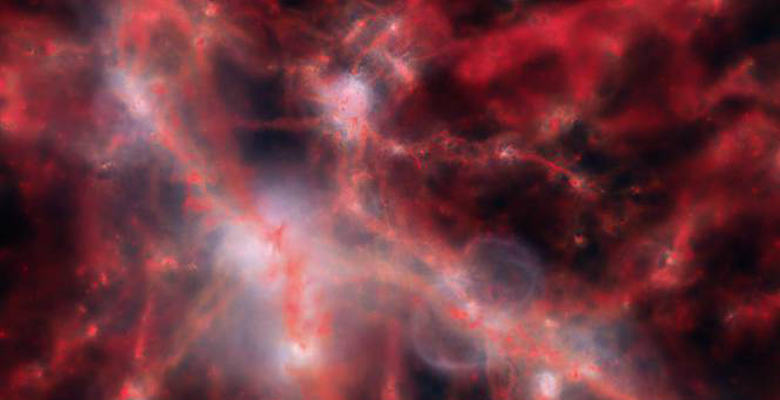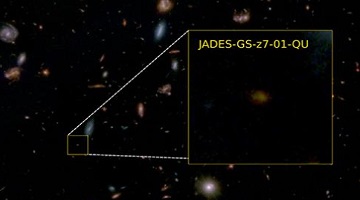Simulated evolution of the Universe

A study conducted by an international team of astrophysicists, including Dr Rob Crain and Dr Ian McCarthy from the LJMU Astrophysics Research Institute (ARI), has emerged as one of the major research highlights of 2015.
Dr Crain and Dr McCarthy are core members of the team that developed a new computer simulation of the evolution of the Universe, in which realistic galaxies are created. The simulation has enabled astrophysicists to study the development of galaxies from almost 14 billion years ago up to the present day. The publication introducing the project was published in the leading astronomy and astrophysics journal Monthly Notices of the Royal Astronomical Society, and was referenced nearly 200 times by other scientific studies last year, making it the second most highly-cited astrophysics publication of 2015, out of nearly 23,000 publications worldwide."
The simulation, called EAGLE (Evolution and Assembly of GaLaxies and their Environments), has attracted interest because it is the first simulation of the Universe to form a realistic population of galaxies. Prior to EAGLE, astrophysicists struggled to explain the diversity of the galaxy population revealed by telescopes - their models typically created galaxies that were older, more massive and more spherical than observed. In contrast, the galaxies formed in the EAGLE simulation are lighter, younger and exhibit the same diversity of shapes as real galaxies. The key reason for this success is that the formation of stars and the growth of black holes in EAGLE galaxies leads to the development of galactic winds, violent outflows that blow away the fuel supply for star formation.
In addition to illuminating the galaxy formation process, the simulations are a crucial means of interpreting the results of observational studies, and they assist the design of future surveys of the cosmos. In its first year, the EAGLE project has fostered the submission of 30 research articles to leading astrophysics and astroparticle physics journals.
Many scientists around the world are analysing the simulations, including the ARI’s computational galaxy formation group, which is made up of Crain (a Royal Society University Research Fellow), McCarthy (a Science and Technology Facilities Council Advanced Fellow), Dr Andreea Font (a Senior Lecturer at the ARI) and their research students.
EAGLE was conducted by the Virgo Consortium, an international collaboration of astrophysicists that carry out state-of-the-art simulations of the Universe, of which Crain and McCarthy are core members. The simulations took several months to run at the "Cosmology Machine" in Durham and at "Curie" in Paris, two of the largest computers used for scientific research in Europe. The study was led by Professor Joop Schaye (Leiden University). The EAGLE project was made possible by the Virgo Consortium, Leiden University, Durham University, the European Research Council, the Netherlands Organization for Scientific Research, the Science & Technology Facilities Council, PRACE and DiRAC.
The full article ‘The EAGLE project: simulating the evolution and assembly of galaxies and their environments,’ is available to read online.


